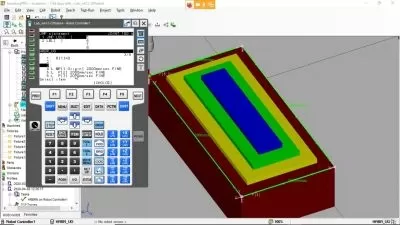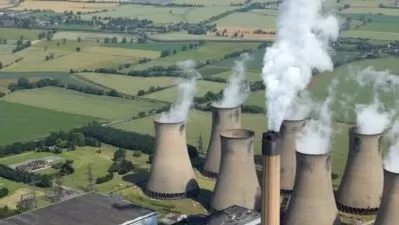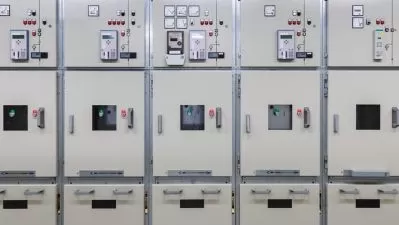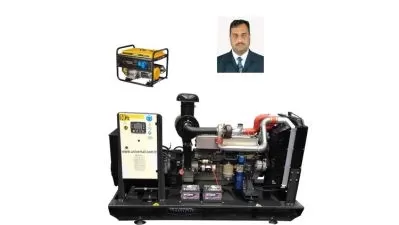Substation Power Engineering Fundamentals
Elite Engineering
9:01:53
Description
Learn from Professionals, Electrical Power Engineering
What You'll Learn?
- What is Substation
- Types of Substation
- Air Insulated Substation AIS
- Gas Insulated Substations
- Hybrid Substations
- Comparision of AIS and GIS Footprint
- Comparision of GIS and AIS
- Substation and Grid Station
- Why Substations are required?
- Requirement of Substation Due to Ferranti Effect
- How earlier power distribution look like
- Developement of 1st AC Transmission Line and Substation
- Tesla Lab
- Components of Substations
- What are Transformer and How they work?
- Transformer Basics
- Induced Voltage per turn relationship.
- Transformer Turn Ratio and full load current calculations
- Percentage Impedance of Transformer
- Transformer Vector Group
- Polarity of Transformer
- Radiator in Transformer
- Types of Cooling, Why Two ratings are given at name plate of transformer
- Buchholz Relay
- Where buchholz relay is installed
- Buchholz Relay Working Principle
- Directional mark on buchholz relay
- Sudden Oil Pressure Relay
- Oil and Winding Temperature Indicator
- Oil Level Indicator
- Pressure Relief Device
- Bushing of Transformer and Bushing Test Tap
- Rupture Disc
- Tap Changers Types and requirments
- Off load tap changer
- On Load Tap Changer
- Transformer General Arrangement Drawing
- Transformer Name Plate
- Silica Gel and Breather
- Isolator
- Circuit Breaker
- Earth Switch
- Voltage Transformer
- Current Transformer
- Cable Sealing End
- SF6 to Air Bushing
- Busbar
- Visual Inspection of Transformer
- Auxiliary Transformer
- NGR Neutral Ground Resistor
- NGR application using ETAP
- Fuses
- Shunt Reactor
- Shunt Reactor at Single Line Diagram
- Current Limiting Reactor
- Communication System Between Substations PLC and Fiber Optic
- Capacitor Bank In substation
- Surge Arrestor
- Lighting Rod and Mast
- Thermal Imaging Technique
- Busbar Scheme, Single bus Single Breaker Scheme
- Single Bus and Single Breaker Scheme with Bus Section CB
- Double Bus Single Breaker Scheme
- One and Half Breaker Scheme
- Ring or Mesh Busbar Scheme
- Double Bus Double Breaker Scheme
- Main and Transfer Bus System
- Double Bus System with bypass isolator
- Concept of Interlocking at Substation
- Philosophy of Protection System
- Control and Protection System in Substation
- ANSI Codes for presentation of devices
- Faults in Power System
- Characterisitics of Protection System
- Protection Zone Over lapping and Blind Zones in Power System
- Protection Relays and its type
- Induction Disk Type Electromechanical Relay
- Attracted Armature Type Relay
- Static Relays
- Digital Relays
- Numerical Protection Relays
- Protection Relays types with respect to function
- Tripping Relays, Lockout Relays, Aux Relays and tripping coils
- Batteries in Substation
- Battery Charger Single Line Diagram
- Battery Charging Techniques
- MV SWGR
- MV Compartments
- Busbar Compartment
- Cable Compartment
- Circuit Breaker Compartment
- Low Voltage Compartment
- What is it mean by earthing, what need to be earthed
- Why to Earth or Ground, Advantages of Earthing
- Over View of Earthing System
Who is this for?
More details
DescriptionDear All,
Welcome to our course “The Substation Fundamentals Courseâ€. A power substation is an essential part of an electrical generation, transmission, and distribution system. The assembly of apparatus used to change some characteristics (e.g. voltage, frequency, p.f., A.C. to D.C., etc.) of an electrical supply is called a substation.
Power substations have switching, protection and control equipment, and transformers. In a large substation, circuit breakers are used to interrupt any short circuits or overload currents that may occur on the network. Smaller distribution stations may use recloser circuit breakers or fuses for the protection of distribution circuits.
Substations themselves do not usually have generators, although a power plant may have a substation nearby. Other devices such as capacitors and voltage regulators may also be located at a substation.
This course consists of 9 Hours of recording and total of 95 different topics.
Following topics are covered in this training.
What are substations
Types of substations
What are air insulated substation
What are gas insulated substations
What are hybrid substation
Comparision of GIS and AISÂ substations
GISÂ &Â AISÂ foot print comparison
What is difference between Substation and Grid Station
Why substations are required?
What is Ferranti Effect?
How was earlier power distribution look like?
Development of 1st AC Transmission Line and Substation
Tesla Lab
Components of substation
Development of 1st AC Transmission Line and Substation
Transformer basics
Induced Voltage & per turn relationship.
Transformer Turn Ratio and full load current calculations.
Percentage Impedance of Transformer
Transformer Vector Group
Polarity of transformer
Radiator in Transformer
Types of Cooling, Why Two ratings are given at name plate of transformer
Buchholz Relay, installation, operation, construction
Sudden Oil Pressure Relay
Oil and Winding Temperature Indicator
Oil Level Indicator
Pressure Relief Device
Bushing of Transformer and Bushing Test Tap
Rupture Disc
Tap Changers Types and requirements
On load and Off load tap changers
Transformer General Arrangement Drawing
Transformer Name Plate.
Silica Gel and Breather
Isolator
Circuit Breaker
Earth Switch
Voltage Transformer
Current Transformer
Cable Sealing End
SF6 to Air Bushing
Busbar in substation
Visual inspection of transformer
Auxiliary Transformer
NGR Neutral Ground Resistor
Application of NGRÂ using ETAP
Fuses
Shunt Reactor
Shunt Reactor at Single Line Diagram
Current Limiting Reactor
Communication System Between Substations PLC and Fiber Optic
Capacitor Bank In substation
Surge Arrestor
Lighting Rod and Mast
Thermal Imaging Technique
Busbar Scheme, Single bus Single Breaker Scheme
Single Bus and Single Breaker Scheme with Bus Section CB
Double Bus Single Breaker Scheme
One and Half Breaker Scheme
Ring or Mesh Busbar Scheme
Double Bus Double Breaker Scheme
Main and Transfer Bus System
Double Bus System with bypass isolator
Concept of Interlocking at Substation
Philosophy of Protection System
Control and Protection System in Substation
ANSI Codes for presentation of devices
Faults in Power System
Characteristics of Protection System.
Protection Zone Over lapping and Blind Zones in Power System
Protection Relays and its type
Induction Disk Type Electromechanical Relay
Attracted Armature Type Relay
Static, Digital and Numerical Relays
Protection Relays types with respect to function
Tripping Relays, Lockout Relays, Aux Relays and tripping coils
85 Batteries in Substation, Single line diagram, charging techniques
MV Switchgear, compartments, MV compartment, CB compartment, Busbar Compartment, LVÂ compartment
Substation Earthing system
Best Regards
Who this course is for:
- Students, technicians & engineers
Dear All,
Welcome to our course “The Substation Fundamentals Courseâ€. A power substation is an essential part of an electrical generation, transmission, and distribution system. The assembly of apparatus used to change some characteristics (e.g. voltage, frequency, p.f., A.C. to D.C., etc.) of an electrical supply is called a substation.
Power substations have switching, protection and control equipment, and transformers. In a large substation, circuit breakers are used to interrupt any short circuits or overload currents that may occur on the network. Smaller distribution stations may use recloser circuit breakers or fuses for the protection of distribution circuits.
Substations themselves do not usually have generators, although a power plant may have a substation nearby. Other devices such as capacitors and voltage regulators may also be located at a substation.
This course consists of 9 Hours of recording and total of 95 different topics.
Following topics are covered in this training.
What are substations
Types of substations
What are air insulated substation
What are gas insulated substations
What are hybrid substation
Comparision of GIS and AISÂ substations
GISÂ &Â AISÂ foot print comparison
What is difference between Substation and Grid Station
Why substations are required?
What is Ferranti Effect?
How was earlier power distribution look like?
Development of 1st AC Transmission Line and Substation
Tesla Lab
Components of substation
Development of 1st AC Transmission Line and Substation
Transformer basics
Induced Voltage & per turn relationship.
Transformer Turn Ratio and full load current calculations.
Percentage Impedance of Transformer
Transformer Vector Group
Polarity of transformer
Radiator in Transformer
Types of Cooling, Why Two ratings are given at name plate of transformer
Buchholz Relay, installation, operation, construction
Sudden Oil Pressure Relay
Oil and Winding Temperature Indicator
Oil Level Indicator
Pressure Relief Device
Bushing of Transformer and Bushing Test Tap
Rupture Disc
Tap Changers Types and requirements
On load and Off load tap changers
Transformer General Arrangement Drawing
Transformer Name Plate.
Silica Gel and Breather
Isolator
Circuit Breaker
Earth Switch
Voltage Transformer
Current Transformer
Cable Sealing End
SF6 to Air Bushing
Busbar in substation
Visual inspection of transformer
Auxiliary Transformer
NGR Neutral Ground Resistor
Application of NGRÂ using ETAP
Fuses
Shunt Reactor
Shunt Reactor at Single Line Diagram
Current Limiting Reactor
Communication System Between Substations PLC and Fiber Optic
Capacitor Bank In substation
Surge Arrestor
Lighting Rod and Mast
Thermal Imaging Technique
Busbar Scheme, Single bus Single Breaker Scheme
Single Bus and Single Breaker Scheme with Bus Section CB
Double Bus Single Breaker Scheme
One and Half Breaker Scheme
Ring or Mesh Busbar Scheme
Double Bus Double Breaker Scheme
Main and Transfer Bus System
Double Bus System with bypass isolator
Concept of Interlocking at Substation
Philosophy of Protection System
Control and Protection System in Substation
ANSI Codes for presentation of devices
Faults in Power System
Characteristics of Protection System.
Protection Zone Over lapping and Blind Zones in Power System
Protection Relays and its type
Induction Disk Type Electromechanical Relay
Attracted Armature Type Relay
Static, Digital and Numerical Relays
Protection Relays types with respect to function
Tripping Relays, Lockout Relays, Aux Relays and tripping coils
85 Batteries in Substation, Single line diagram, charging techniques
MV Switchgear, compartments, MV compartment, CB compartment, Busbar Compartment, LVÂ compartment
Substation Earthing system
Best Regards
Who this course is for:
- Students, technicians & engineers
User Reviews
Rating
Elite Engineering
Instructor's Courses
Udemy
View courses Udemy- language english
- Training sessions 96
- duration 9:01:53
- Release Date 2023/05/18
















